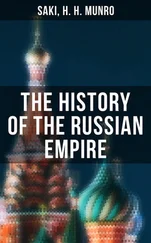The aged Justinus died in 527 a.d., and Justinian became the sole occupant of the throne, which he was destined to occupy for thirty-eight years. It was less than half the century, yet his personality seems to pervade the whole period, and history hardly remembers the insignificant predecessors and successors whose reigns eke out the remainder of the years between 500 and 600.
The empire when Justinian took it over from the hands of his uncle was in a more prosperous condition than it had known since the death of Constantine. Since the Ostrogoths had moved out of the Balkan Peninsula in a.d. 487, it had not suffered from any very long or destructive invasion from without. The Slavonic tribes, now heard of for the first time, and the Bulgarians had made raids across the Danube, but they had not yet shown any signs of settling down—as the Goths had done—within the limits of the empire. Their incursions, though vexatious, were not dangerous. Still the European provinces of the empire were in worse condition than the Asiatic, and were far from having recovered the effects of the ravages of Fritigern and Alaric, Attila, and Theodoric. But the more fortunate Asiatic lands had hardly seen a foreign enemy for centuries.5 Except in the immediate neighbourhood of the Persian frontier there was no danger, and Persian wars had been infrequent of late. Southern Asia Minor had once or twice suffered from internal risings—rebellions of the warlike Isaurians—but civil war left no such permanent mark on the land as did barbarian invasions. On the whole, the resources of the provinces beyond the Bosphorus were intact.
Justinus in his quiet reign had spent little or none of the great hoard of treasure which Anastasius had bequeathed to him. There were more than 300,000 lbs. of gold [£13,400,000] in store when Justinian came to the throne. The army, as we have had occasion to relate in the last chapter, was in good order, and composed in a larger proportion of born subjects of the empire than it had been at any time since the battle of Adrianople. There would appear to have been from 150,000 to 200,000 men under arms, but the extent of the frontiers of the empire were so great that Justinian never sent out a single army of more than 30,000 strong, and forces of only a third of that number are often found entrusted with such mighty enterprises as the invasion of Africa or the defence of the Armenian border. The flower of the Roman army was no longer its infantry, but its mailed horsemen ( Cataphracti ), armed with lance and bow, as the Parthian cavalry had once been of old. The infantry comprised more archers and javelin-men than heavy troops: the Isaurians and other provincials of the mountainous parts of Asia Minor were reckoned the best of them. Among both horse and foot large bodies of foreign auxiliaries were still found: the Huns and Arabs supplied light cavalry, the German Herules and Gepidæ from beyond the Danube heavier troops.
The weakest point in the empire when Justinian took it over was its financial system. The cardinal maxim of political economy, that “taxes should be raised in the manner least oppressive to those who pay them” was as yet undreamt of. The exaction of arbitrary customs dues, and the frequent grant of monopolies was noxious to trade. The deplorable system of tax-farming through middlemen was employed in many branches of the revenue. Landed proprietors, small and great, were still mercilessly overtaxed, in consideration of their exemption from military service. The budget was always handicapped by the necessity for providing free corn for the populace of Constantinople. Yet in spite of all these drawbacks Justinian enjoyed an enormous and steady revenue. His finance minister, John of Cappadocia, was such an ingenious extortioner that the treasury was never empty in the hardest stress of war and famine: but it was kept full at the expense of the future. The grinding taxation of Justinian's reign bore fruit in the permanent impoverishment of the provinces: his successors were never able to raise such a revenue again. Here again Justinian may well be compared to Louis XIV.
Justinian's policy divides into the departments of internal and foreign affairs. Of his doings as legislator, administrator, theologian, and builder, we shall speak in their proper place. But the history of his foreign policy forms the main interest of his reign. He had determined to take up a task which none of his predecessors since the division of the Empire under Arcadius and Honorius had dared to contemplate. It was his dream to re-unite under his sceptre the German kingdoms in the Western Mediterranean which had been formed out of the broken fragments of the realm of Honorius; and to end the solemn pretence by which he was nominally acknowledged as Emperor West of the Adriatic, while really all power was in the hands of the German rulers who posed as his vicegerents. He aimed at reconquering Italy, Africa, and Spain—if not the further provinces of the old empire. We shall see that he went far towards accomplishing his intention.
But during the first five years of his reign his attention was distracted by other matters. The first of them was an obstinate war of four years' duration, with Kobad, King of Persia. The causes of quarrel were ultimately the rival pretensions of the Roman and Persian Empires to the suzerainty of the small states on their northern frontiers near the Black Sea, the kingdoms of Lazica and Iberia, and more proximately the strengthening of the fortresses on the Mesopotamian border by Justinian. His fortification of Dara, close to the Persian frontier town of Nisibis, was the casus belli chosen by Kobad, who declared war in 528, a year after Justinian's accession.
The Persian war was bloody, but absolutely indecisive. All the attacks of the enemy were repelled, and one great pitched battle won over him at Dara in 530. But neither party succeeded in taking a single fortress of importance from the other; and when, on the death of Kobad, his son Chosroës made peace with the empire, the terms amounted to the restoration of the old frontier. The only importance of the war was that it enabled Justinian to test his army, and showed him that he possessed an officer of first-rate merit in Belisarius, the victor of the battle of Dara.
This famous general was a native of the Thracian inland; he entered the army very young, and rose rapidly, till at the age of twenty-three he was already Governor of Dara, and at twenty-five Magister militum of the East.6 His influence at Court was very great, as he had married Antonina, the favourite and confidante of the Empress Theodora. His position, indeed, was not unlike that which Marlborough, owing to his wife's ascendency, enjoyed at the Court of Queen Anne. Like Marlborough, too, Belisarius was ruled and bullied by his clever and unscrupulous wife. Unlike the great Duchess Sarah, Antonina never set herself to thwart her mistress; but after Theodora's death she and her husband lost favour, and in declining years knew much the same misfortune as did the Marlboroughs.
The year which saw the Persian War end [a.d. 532], saw also the rise and fall of another danger, which while it lasted was much more threatening to the Emperor's life and power. We have already noticed the “Blues” and “Greens,” the great factions of the Byzantine Circus.7 All through the fifth century they had been growing stronger, and interfered more and more in politics, and even in religious controversies. To be a “Green” in 530 meant to be a partisan of the house of the late Emperor Anastasius, and a Monophysite.8 The “Blues” posed as partisans of the house of Justinus, and as strictly orthodox in matters ecclesiastical. From mere Circus factions they had almost grown into political parties; but they still retained at the bottom many traces of their low sporting origin. The rougher elements pre-dominated in them; they were prone to riot and mischief, and, as the events of 532 were to show, they were a serious danger to the State.
Читать дальше












